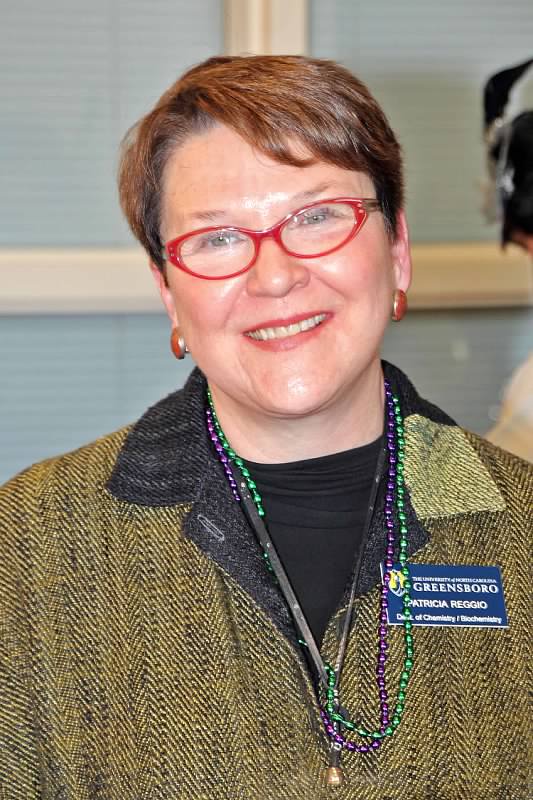News & Events
Patricia H. Reggio, Ph.D.
Posted on September 1, 2017

When
Date - September 1, 2017
1:00 pm - 2:00 pm
What
Marie Foscue Rourk Professor
Department of Chemistry & Biochemistry
University of North Carolina Greensboro
Title: “2-AG Signaling at the Cannaboid CB2 Receptor: A Combined Molecular Dynamics and CB2/Gi Chemical Cross-Linking-Study”
Abstract:
The cannabinoid receptors, CB1 and CB2, are Class A G-protein coupled receptors (GPCRs) that both signal primarily via an inhibitory G-protein, Gi. GPCRs are integral membrane proteins that have seven transmembrane helices (TMHs) arranged to form a closed bundle in the lipid bilayer, with extracellular and intracellular loops that connect the TMH helices, an N-terminus that is extracellular and a C-terminus that is intracellular. About 40% of all prescription pharmaceuticals on the market today target a GPCR. Examples include Eli Lilly’s Zyprexa, Schering-Plough’s Clarinex, GlaxoSmithKline’s Zantac, and Novartis’s Zelnorm. There is a broad consensus in the pharmaceutical industry that GPCRs will remain major targets of drug development for the foreseeable future (see http://pubs.acs.org/subscribe/archive/mdd/v07/i11/html/1104feature_filmore .html).
The endogenous ligands identified to activate the CB1 and CB2 receptors, N-arachidonoylethanolamine (AEA) and 2-arachidonoyl glycerol (2-AG), respectively, are both derivatives of the fatty acid, arachidonic acid. As a result, these ligands are both “lipid-loving”. One long term interest in my lab has been an exploration of lipid pathway entrance of cannabinoid ligands into the cannabinoid receptors and their subsequent activation of Gi protein. To probe this question, we have used microsecond all-atom molecular dynamics to explore (1) the endogenous cannabinoid, 2-AG’s interaction/activation of the cannabinoid CB2 receptor via the lipid bilayer; (2) the subsequent formation of the CB2/Gi signaling complex; and ultimately, (3) CB2 activation of Gi. This work has been complemented by a comprehensive G protein-coupled receptor-Gi protein chemical cross-linking strategy to map the CB2/Gi interface. My talk will focus on the results of these simulations and crosslinking experiments and will address why the process of a lipid-derived endogenous ligand activating its cognate GPCR (like 2-AG signaling at CB2) necessarily diverges from the process used by other Class A GPCR sub-families and their water soluble endogenous ligands. [Support: NIDA RO1 DA003934 and KO5 DA021358].





